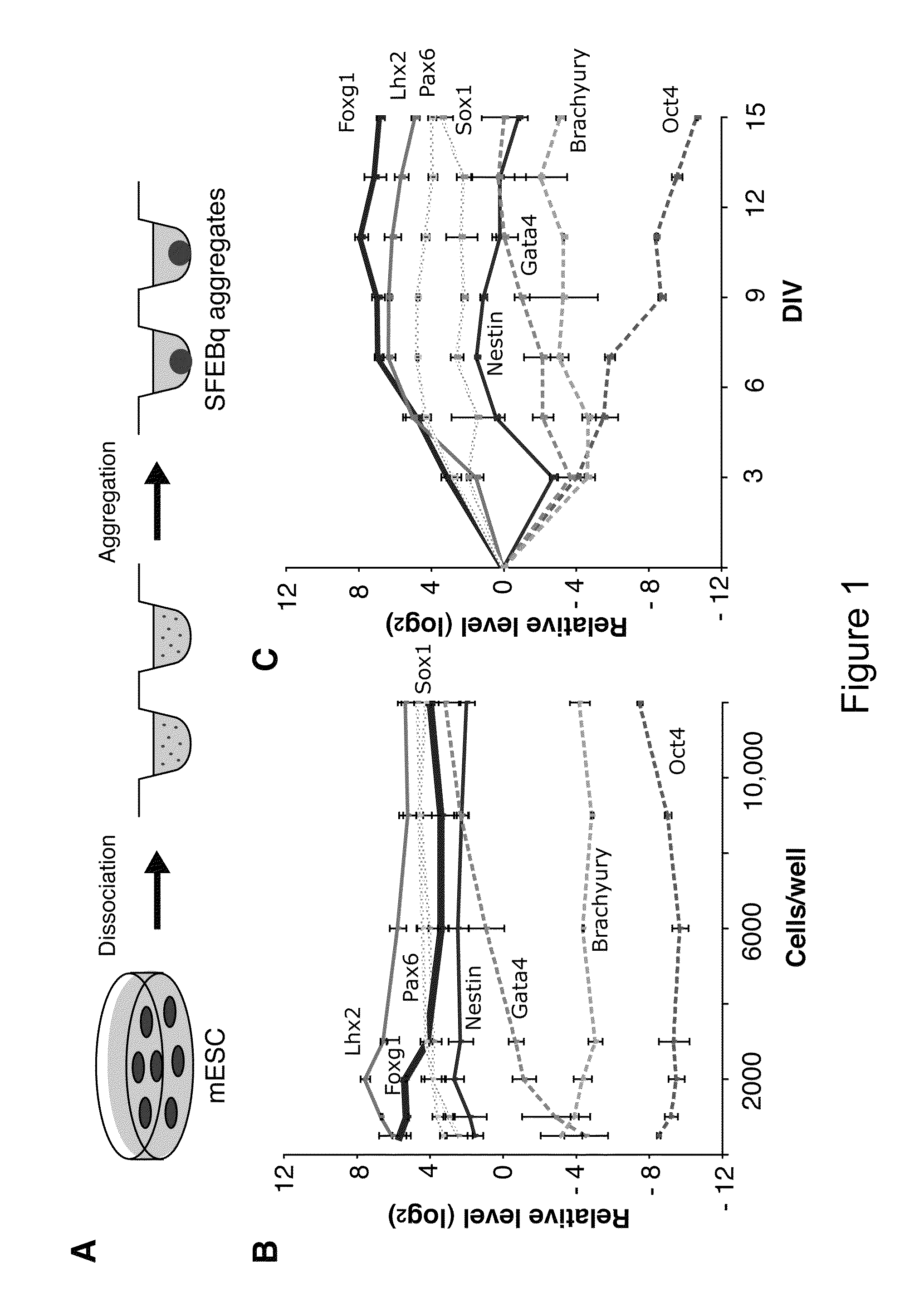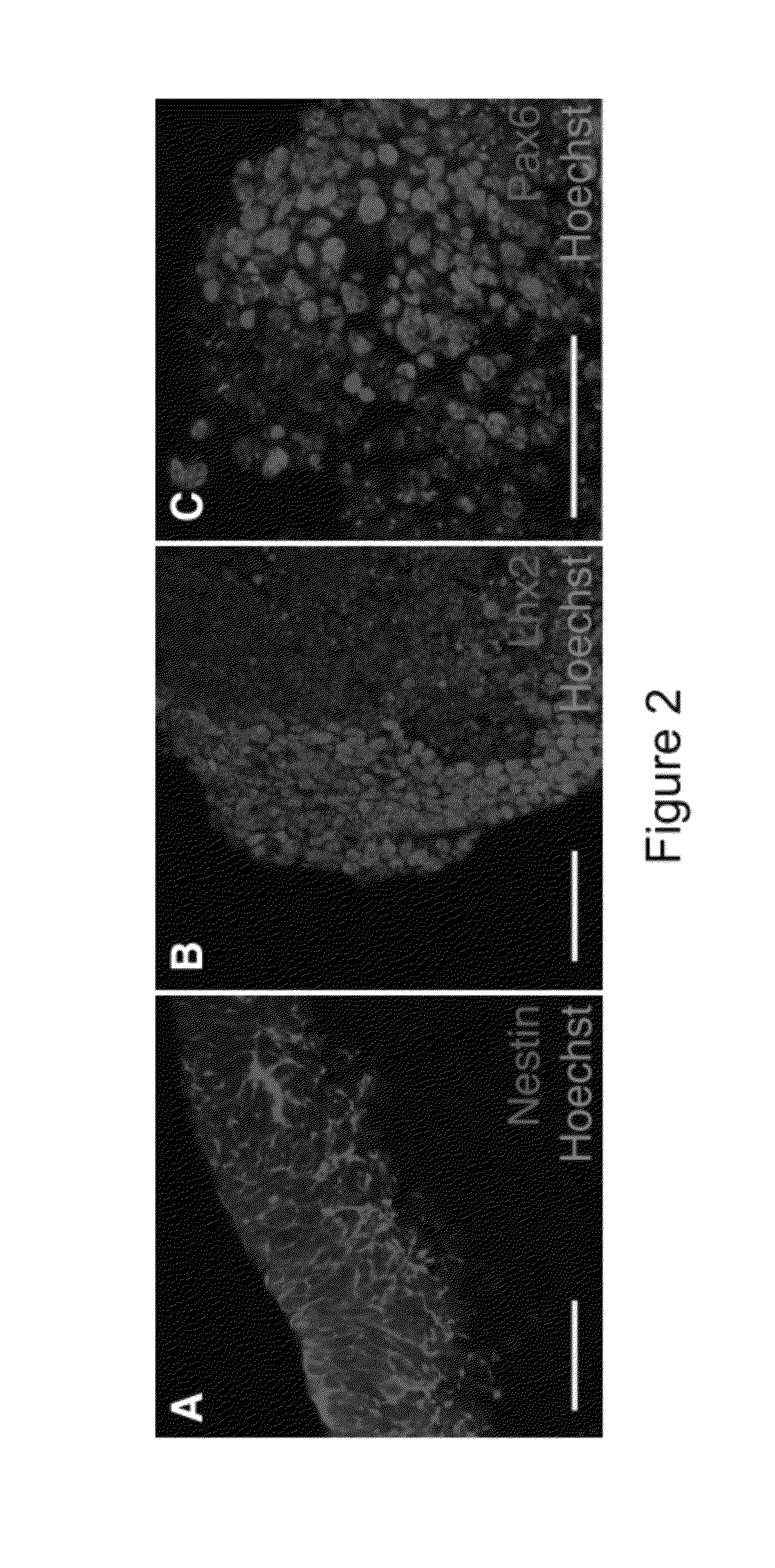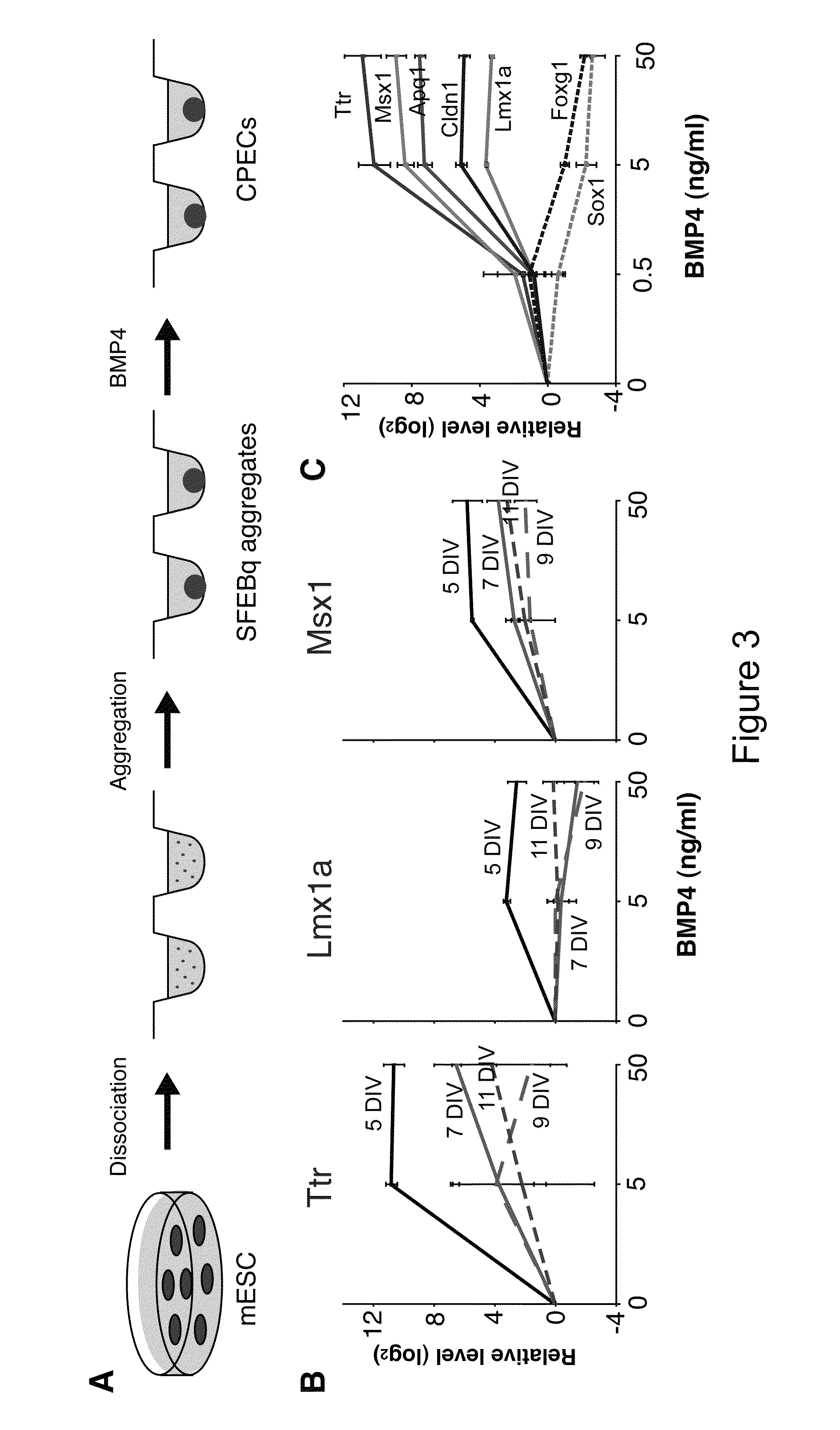Generation of choroid plexus epithelial cells from human embryonic stem cells
a technology of choroid plexus and stem cells, which is applied in the field of choroid plexus epithelial cells from human embryonic stem cells, can solve the problems of less practicability of expansion of cpecs from the endogenous choroid plexus in cultur
- Summary
- Abstract
- Description
- Claims
- Application Information
AI Technical Summary
Benefits of technology
Problems solved by technology
Method used
Image
Examples
Embodiment Construction
[0027]The term “BMP” as used here refers to a Bone Morphogenetic Protein, which include, but are not limited to BMP1 (GeneID: 649); BMP2 (GeneID: 650); BMP3 (GeneID: 651); BMP4 (GeneID: 652); BMP5 (GeneID: 653); BMP6 (GeneID: 654); BMP7 (GeneID: 655); BMP8 (GeneID: 656); BMP9 / GDF2 (GeneID: 2658); BMP10 (GeneID: 27302); BMP11 / GDF11 (GeneID: 10220); BMP12 / GDF7 (GeneID: 151449); BMP13 / GDF6 (GeneID: 392255); BMP14 / GDF5 (GeneID: 8200); BMP15 (GeneID: 9210); GDF10 / BMP3B (GeneID: 2662). These BMPs are members of the Transforming Growth Factor Beta (TGFB) superfamily. Other members of the TGFB superfamily—other than BMPs—include but are not limited to TGFBs, Growth and Differentiation Factors (GDFs), Activins, and Nodal; GDF1 (GeneID: 2657); GDF3 (GeneID: 9573); GDF8 / MSTN (GeneID: 2660); GDF9 (GeneID: 2661); GDF15 (GeneID: 29455); TGFB1 (GeneID: 7040); TGFB2 (GeneID: 7042); TGFB3 (GeneID: 7043); TGFB4 / LEFTY2 (GeneID: 7044); IHBA / Activin A (GeneID: 3624); IHBB / Activin AB (GeneID: 3625); IHBC...
PUM
| Property | Measurement | Unit |
|---|---|---|
| concentration | aaaaa | aaaaa |
| concentration | aaaaa | aaaaa |
| concentration | aaaaa | aaaaa |
Abstract
Description
Claims
Application Information
 Login to View More
Login to View More - R&D
- Intellectual Property
- Life Sciences
- Materials
- Tech Scout
- Unparalleled Data Quality
- Higher Quality Content
- 60% Fewer Hallucinations
Browse by: Latest US Patents, China's latest patents, Technical Efficacy Thesaurus, Application Domain, Technology Topic, Popular Technical Reports.
© 2025 PatSnap. All rights reserved.Legal|Privacy policy|Modern Slavery Act Transparency Statement|Sitemap|About US| Contact US: help@patsnap.com



